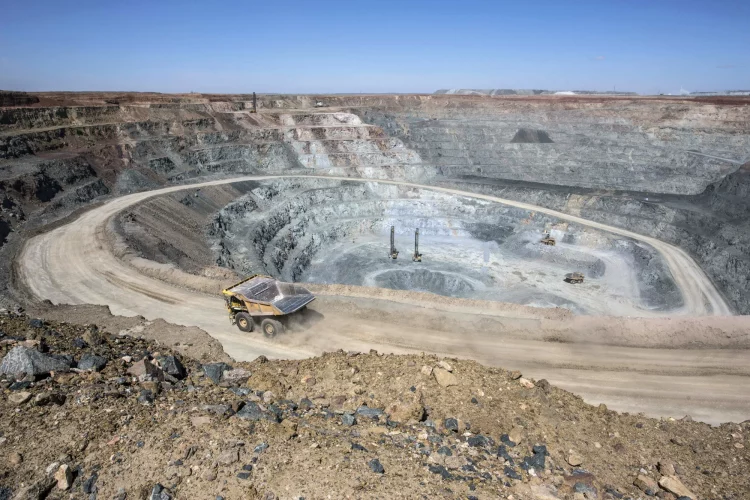For decades, emerging markets (EMs) have worn a reputation as monetary policy casualties. Whenever the U.S. Federal Reserve tightened interest rates, capital fled the Global South. Currencies collapsed, inflation soared, and IMF rescue packages followed. The so-called “original sin” of borrowing in foreign currencies haunted policymakers from Buenos Aires to Jakarta. But in 2024 and 2025, something surprising has unfolded: despite one of the most aggressive Fed hiking cycles in modern history, several emerging markets are not only surviving but thriving. A key reason? A commodity boom centered on the metals and energy of the future—particularly copper, lithium, and oil—is redefining resilience for resource-rich EMs. The question now is whether this newfound insulation is a temporary reprieve or the start of a more durable macroeconomic realignment.
The Traditional Vulnerability: Rate Hikes and EM Fragility
Historically, higher interest rates in developed economies—especially the U.S.—have meant bad news for emerging markets. As yields rise in safe-haven assets, investors typically pull capital out of riskier EM assets. Currencies weaken, dollar-denominated debt becomes costlier to service, and inflation expectations unravel. In the 1990s and 2010s, this dynamic played out with painful regularity, from the Tequila Crisis to the Taper Tantrum. But in the post-pandemic era, this correlation has weakened. Many EMs entered the current tightening cycle with stronger external balances, higher foreign exchange reserves, and improved fiscal governance. Yet what’s most notable is the role commodities have played in cushioning the blow.
Copper: The Conductive Shield of Andean Economies
Nowhere is this more evident than in South America’s copper belt. Chile and Peru, the world’s largest and second-largest copper exporters, have seen their trade balances improve sharply thanks to a surge in copper demand driven by global electrification, data center growth, and the green energy transition. Despite political volatility in both countries, the macro fundamentals have held steady, largely due to copper’s price resilience.
Chile, for example, saw its current account deficit narrow significantly in 2024, despite global monetary tightening. With copper prices stabilizing above $9,000 per metric ton, foreign exchange inflows have bolstered the peso and allowed the central bank to cut rates even as the Fed stayed hawkish. This decoupling is historic. Previously, Chile’s monetary path was heavily shadowed by U.S. moves. Now, copper demand from China, India, and the EU’s green tech sectors is creating a parallel, commodity-driven cycle.
Meanwhile, Peru’s mining output, despite sporadic labor unrest, has continued to attract foreign investment. Multinational firms are accelerating development of low-emissions smelting technologies and expanding capacity. These capital inflows are partially offsetting outflows from bond markets, demonstrating that resource FDI can act as a stabilizer even in tight monetary environments.
Lithium: White Gold and the EM Ascent
If copper is the old guard of EM resilience, lithium is its flashy newcomer. In the race for battery supremacy, countries like Argentina and Bolivia are emerging as strategic assets in the global energy transition. Lithium prices, though volatile, remain at levels that ensure profitability for producers and royalties for host governments. This mineral—essential for electric vehicle (EV) batteries and energy storage systems—is increasingly viewed not just as an export commodity, but as economic leverage.
Argentina, despite chronic inflation and political churn, has seen robust lithium-linked investment in its northern provinces. Projects led by Chinese, Australian, and American firms are generating jobs, infrastructure spending, and export receipts. More importantly, the lithium narrative has improved Argentina’s risk perception among investors. A country once plagued by debt defaults is now part of long-term strategic plans for global auto giants like Tesla and BYD. This confidence has translated into slower capital outflows and a surprisingly resilient peso amid global monetary headwinds.
Even Bolivia—long marginalized in global trade—has found new negotiating power. Its vast untapped lithium reserves are attracting multi-bloc interest, from Western conglomerates to Chinese SOEs. While development has been slow, the prospect of future lithium exports is already influencing fiscal planning and sovereign bond spreads.
Oil: The Old Pillar Reasserts Its Role
While energy transition metals have received much attention, oil remains the kingmaker in many EM macro narratives. In 2024 and early 2025, oil prices held firm above $80 per barrel, despite global growth concerns. For countries like Nigeria, Brazil, and Saudi Arabia (though the latter is technically a high-income economy), these prices have delivered budgetary breathing room and improved current account positions.
Nigeria, which struggled with subsidy mismanagement and currency devaluation in recent years, saw its naira stabilize as oil revenues increased. The government’s renewed efforts to attract private investment into upstream projects and refine more domestically have improved medium-term sentiment. Moreover, the Dangote refinery coming online has decreased fuel import bills and boosted trade balances, indirectly softening the impact of global rate pressures.
Brazil, meanwhile, has benefited from both oil and agricultural exports. Petrobras’ performance has bolstered fiscal revenues, enabling Brazil’s central bank to adopt a more flexible monetary stance despite Fed hawkishness. The real has not only avoided collapse but posted periods of strength, aided by robust trade surpluses. This is not to say that structural issues—pension burdens, political noise—have vanished, but the commodity backdrop is granting policymakers more room to maneuver.

Commodity Revenues as Monetary Buffers
Beyond direct trade surpluses, commodity booms offer more subtle shields against rate hikes. First, they bolster FX reserves, allowing central banks to intervene more confidently in currency markets. Second, they improve fiscal balances, reducing the need for inflationary financing or expensive external debt issuance. Third, they attract FDI that is less flight-prone than portfolio flows.
Take Indonesia as an example. Nickel—vital for EV batteries—has transformed its trade profile. With value-added processing being encouraged domestically, Indonesia is not just exporting raw ore but refining and selling higher-margin products. This has helped fund infrastructure and maintain currency stability even as global investors trimmed EM bond exposure.
Commodity-linked sovereign wealth funds (SWFs) are another critical buffer. Countries like Chile, Nigeria, and Kazakhstan are using SWFs to smooth budgetary volatility and recycle windfall profits into stabilizing investments. This reduces pro-cyclicality and offers a counterbalance to the boom-bust patterns of earlier commodity cycles.
A Word of Caution: The Limits of the Shield
While the commodity boom narrative is compelling, it is not a panacea. First, these windfalls are highly cyclical and sensitive to geopolitical shocks. A slowdown in China’s infrastructure spending or a major oil supply glut could quickly reverse the gains. Second, many EMs remain exposed to external debt burdens, particularly in frontier markets without access to concessional financing or swap lines.
Moreover, inflation remains a thorny challenge. Commodity booms often bring “Dutch disease,” where resource earnings push up local currencies and harm non-commodity exports. In countries with poor fiscal governance, windfalls can lead to complacency or corruption, as seen in parts of sub-Saharan Africa.
And not all EMs are commodity beneficiaries. Nations like Turkey, Egypt, and the Philippines are net importers of oil and metals. They have seen inflation surge and currencies weaken sharply in response to global tightening. The commodity boom has provided little insulation for these economies, underscoring that resilience is unevenly distributed.
Global Supply Chains and Strategic Commodities
What’s unique about this cycle is the geopolitically strategic nature of many EM-exported commodities. Lithium, copper, nickel, and rare earths are not just priced on supply and demand—they’re wrapped in national security and decarbonization narratives. This has allowed EMs to secure long-term contracts, bilateral partnerships, and even infrastructure-for-resources deals.
China has been a major player here, locking in supply through both investment and diplomacy. The U.S. and EU, recognizing their vulnerability in critical mineral supply chains, are now playing catch-up. This great power competition is creating a floor under commodity prices and guaranteeing a baseline of demand that may prove more durable than in past booms.
It also means that commodity-exporting EMs are no longer just price takers—they are becoming essential actors in a new era of strategic globalization. Their bargaining power is growing, and with it, their macroeconomic latitude.
Investment Takeaways: Positioning for EM Stability
For investors, the implications are clear. Emerging markets can no longer be treated as a monolith. The new playbook demands a granular, commodity-sensitive approach. Countries with critical minerals and governance capacity—like Chile, Indonesia, and Brazil—offer compelling opportunities in local debt, equities, and even infrastructure partnerships.
Commodity producers with SWFs and sound monetary frameworks are best positioned to navigate future rate hikes. Their local currency assets may offer real returns with improving fundamentals. Equity sectors tied to mining, energy infrastructure, and value-added processing also stand to benefit.
At the same time, investors must be cautious with EMs lacking export leverage or facing high external debt. Rate hikes still matter—just not equally. The divergence within EMs is growing, and commodities are the defining fault line.
Conclusion: The Commodities-Cushioned Cycle
We may be witnessing the birth of a new EM narrative—one where global rate hikes no longer automatically spell doom for the developing world. Instead, resource abundance, strategic relevance, and smarter macro frameworks are providing insulation in a volatile global environment.
Copper, lithium, and oil are not just boosting trade—they’re rewriting risk profiles, strengthening currencies, and granting policy autonomy. This shift won’t eliminate volatility or decouple EMs entirely from global finance, but it does suggest that the old models of EM fragility need revision.
In the 2020s, it seems, the best defense against rising rates may not be a dovish Fed—but a mine full of the right metal.













































